Politics
‘We Are Pessimistic About the Future’: Shudders Run Through Ukraine’s Art Scene as Tensions with Russia Escalate
Faced with uncertainty, Ukrainian artists and cultural producers are trying to find new ways to act together.
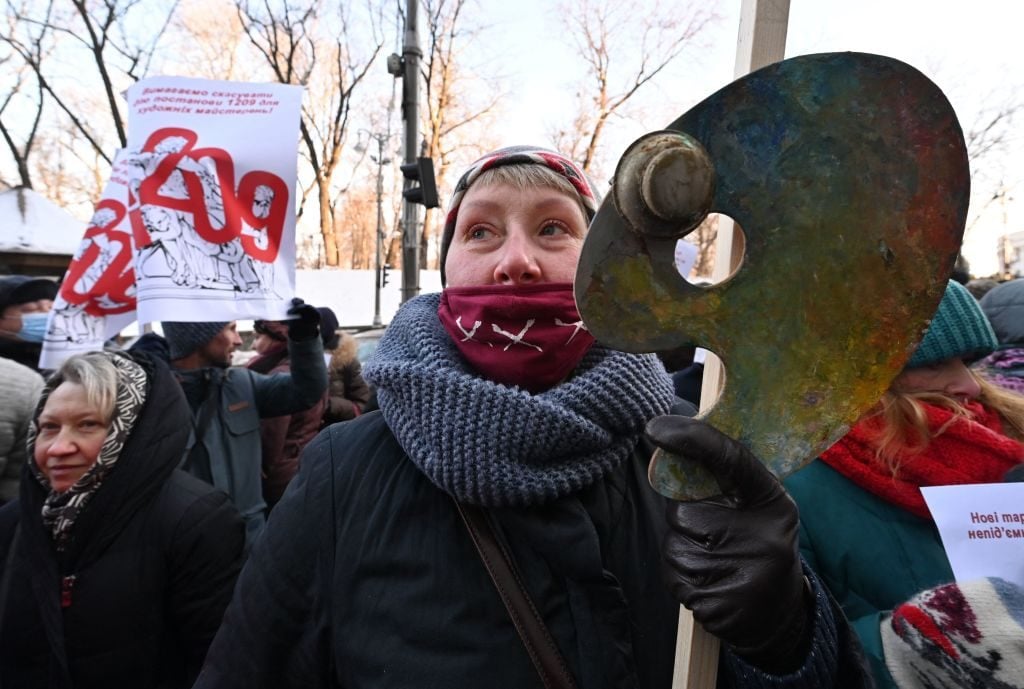
Faced with uncertainty, Ukrainian artists and cultural producers are trying to find new ways to act together.

Dorian Batycka

Last summer, Russian President Vladimir Putin published a 5,000-word essay outlining what he claimed are the many cultural ties linking the Ukrainian and Russian people, writing that the two nations’ “spiritual, human and civilizational ties formed for centuries have their origins in the same sources.”
Critics, many from within Ukraine, were quick to decry the letter as an egregious attempt to drive Russia’s controversial foreign policy forward, with some referring to recent escalations as part of a broader culture war designed to reign in former Soviet republics.
Artists and cultural producers have felt the ripple effects crisis, which intensified in December, after the Russian military dramatically increased activity at its border with Ukraine, stoking fears of an invasion.
According to Volodymyr Sheiko, director general of the Ukrainian Institute, an organization focused on cultural management, his country is being subjected to a form of “hybrid warfare” that includes everything from historical revisionism to patently false campaigns of disinformation. “It is crucial to complement the current political security discussions with cultural dimensions,” he told Artnet News.
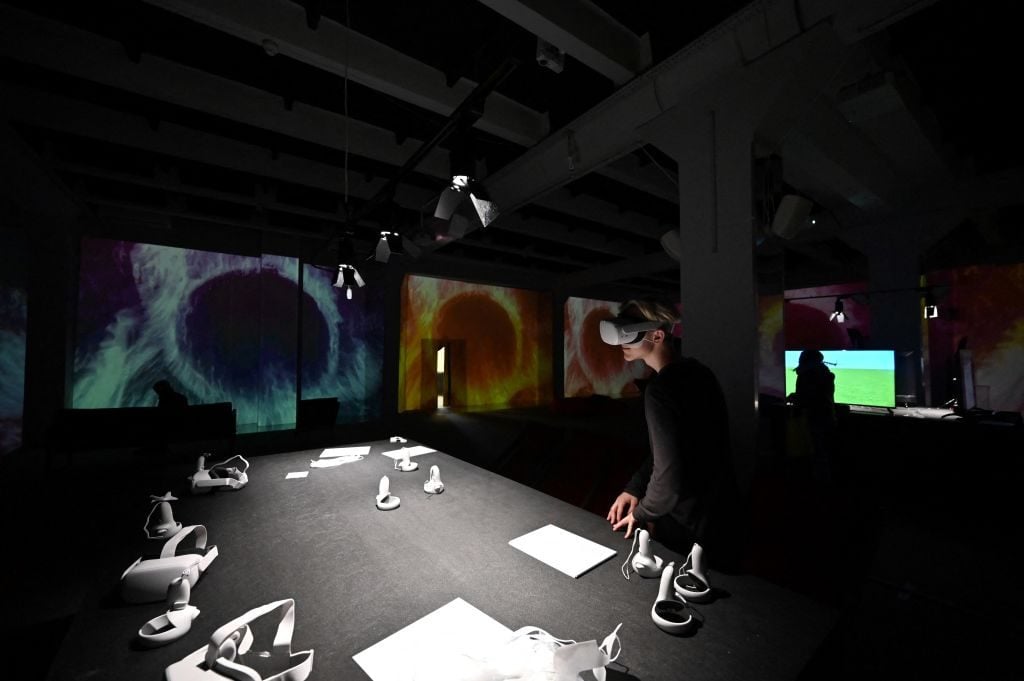
A visitor plays with an interactive creation during the opening of the First Ukrainian Biennale of Digital and Media Art in Kiev on October 15, 2021. Photo: Sergei SUPINSKY / AFP. via Getty Images.
The recent tension has origins in the 2014 conflict, which saw the former Ukrainian territory of Crimea annexed by Russia. During the crisis, several cultural institutions were caught in the cross-fire. In November of that year, the Donetsk Regional Museum of Local History was hit 15 times by anti-tank missiles, losing more than 30 percent of the museum’s 150,000 total objects. More than 30 other cultural institutions were reported to have been damaged or destroyed in eastern Ukraine during the clash.
Eight years on, the U.S. and NATO say that Russia is further endangering peace by stacking the border with more than 100,000 troops. In turn, Russia sent the U.S. a list of demands that include a full barring of Ukraine from ever entering the western military alliance. Ukraine’s president has expressed fear that an invasion could start a European war.
The battle over hearts and minds, but also the cultural history of the two nations, erupted in manifold ways over the past few months and many in the country’s cultural sector are wondering what may come next. Last fall, a Dutch appeals court ruled that Ukraine, not Russia, had legal control over an illustrious cache of gold artifacts from Crimea. Known as the Scythian gold, the nearly 300-piece collection was ordained by the Dutch court as part of the “cultural heritage of the Ukrainian state,” prompting Russian cultural observers to call the case “biased” and “illegal.”
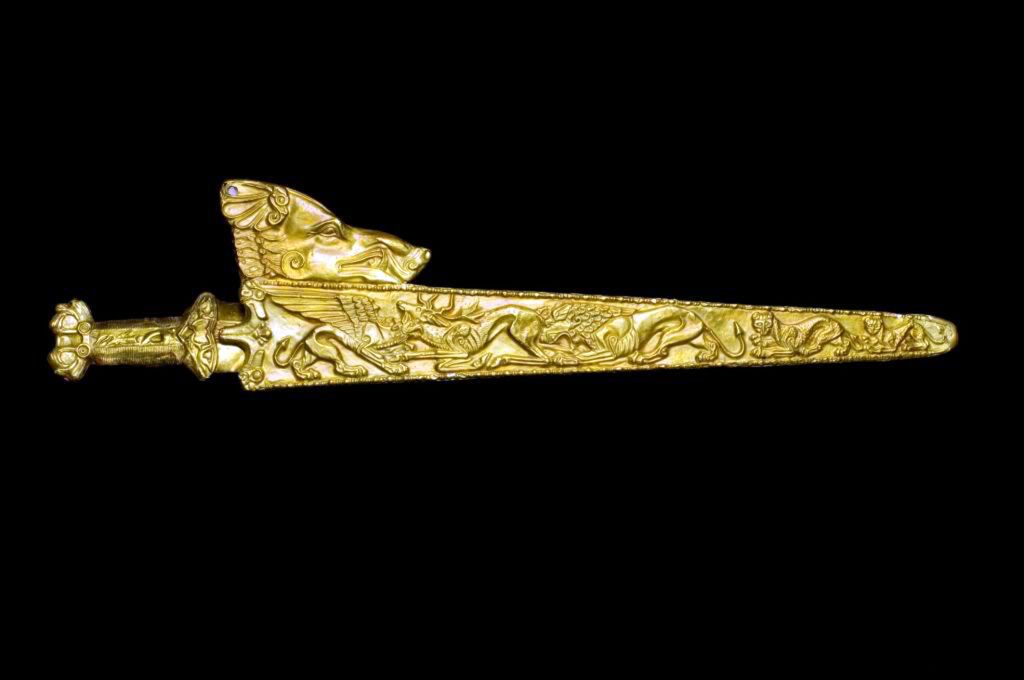
Scythian gold sword and scabbard. Museum of Historic Treasures of Ukraine, Kiev. Photo: Pictures From History/Universal Images Group via Getty Images.
“What is going on now is a form of neo-colonialism,” Olesia Ostrovska-Liuta, director of Kyiv’s Mystetskyi Arsenal and former Ukrainian deputy minister of culture, told Artnet News. “Russia is promoting colonial thinking and acting as an imperial power.” Located in a former military complex, the Mystetskyi Arsenal is one of the largest venues for contemporary and modern art in Europe. Included in its collection are rare works by important Ukrainian artists of the 20th century, including Boris Mikhailov and Andriy Sahaidakovsky.
The museum has been deeply affected by looming economic hardship caused by Russian support for Nord Stream 2, a major gas pipeline running from Russia to Germany that crosses through Ukraine. Ukraine’s transit fees for Russian natural gas, which account for 2 percent of the country’s GDP, have dropped 25 percent since 2021. The Mystetskyi Arsenal, which gets more than half its funding from the central government, is already feeling the pinch of icy relations with Russia.
At the same time, gas prices are increasing. In a statement, the Ukrainian government said Russia played “a role in energy price hikes,” which have increased 20 fold since 2020. “Suddenly our bills are threefold or fourfold what they used to be,” said Ostrovska-Liut. “As an institution in charge of safekeeping cultural objects and international loans, the economic conditions are making our operations increasingly unsustainable.”
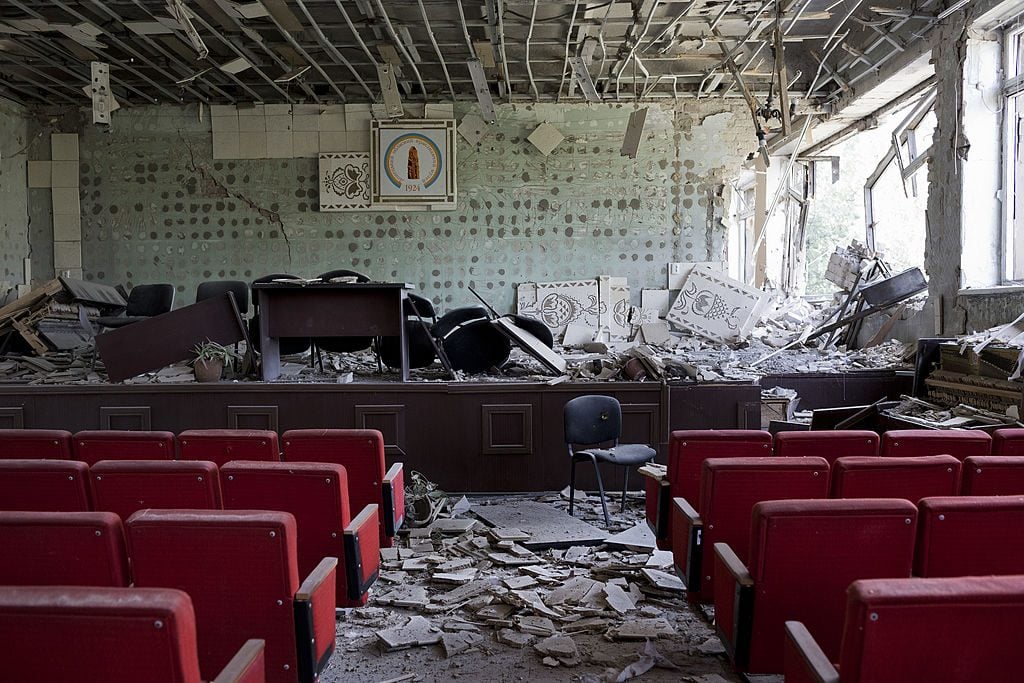
The Museum of Donetsk was destroyed by artillery shelling on August 21, 2014 in Donetsk, Ukraine. Photo: Pierre Crom/Getty Images.
Artists protested the price hikes outside government offices in December, with signs saying “Ukrainian art will die with the new tariffs.”
Vasyl Cherepanyn, a co-organizer behind the Kyiv Biennial, said that in the years since the 2014 annexation, some international funders are also starting to lose interest in supporting indepenand what the bdent cultural initiatives in Ukraine. The biennial was launched in 2015 “as a way of reimagining Ukrainian society in light of the collapse of the Soviet Union,” he said.
Serge Klymko, another biennial organizer, said the tone in the cultural sphere has dramatically changed.
“We couldn’t imagine that, nearly eight years on, the conflict would be intensifying again,” he said. “Now, we are much more pessimistic about the future.”
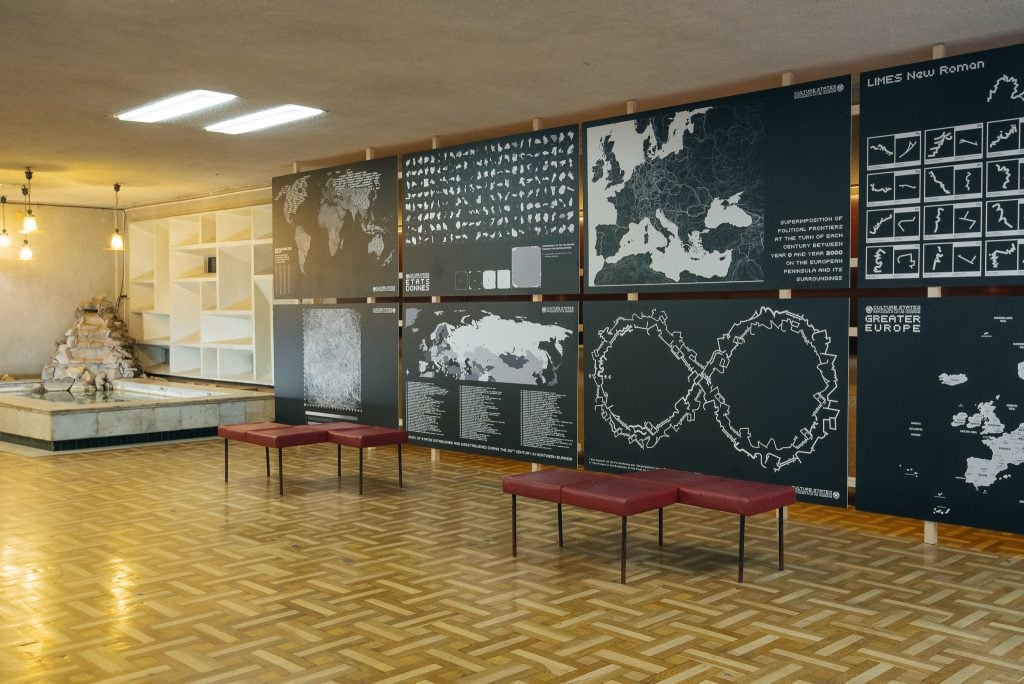
“Allied” exhibition for the 2021 Kyiv biennial. Photo by Oleksandr Kovalenko
According to Alona Karavai, an Ivano-Frankivsk-based cultural producer and co-founder of Insha Osvita, a nonprofit that brings culture and education to remote regions of Ukraine, “the role of art in conflict is to make sense of what is going on, to articulate strategies for the future. It’s about maintaining our connections to the outside world,” Karavai said.
Despite the setbacks, the cultural scene in Ukraine is trying to find ways to act together. In 2019, the Kyiv Bienniale initiated the East Europe Biennale Alliance together with Survival Kit Festival in Riga, Latvia, the Warsaw Biennale in Poland, the OFF Biennale from Budapest, Hungary, and the Biennale of Matter Art from Prague.
The group convened in Kyiv in November to open the fourth edition of the Kyiv Biennale, with the evolving crisis hanging overhead. Curated by the alliance, the show, called “Allied,” examined how alternative forms of international solidarity could be positioned as a means of fostering cultural solutions to conflict.
Cherepanyn, from the Kyiv Biennale, said that while feelings of abandonment are increasing, he and others mostly feel compelled to persevere. “What has emerged in our way of thinking is a new way of conceptualizing alliances,” he said. “We want to be autonomous and translocal, while remaining as independent as possible.”